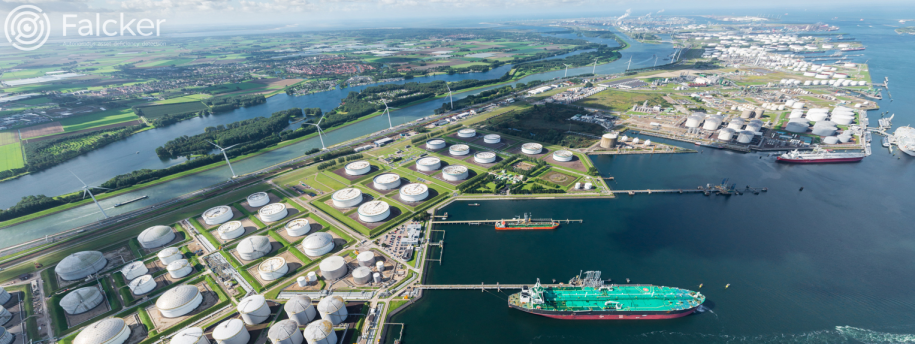It’s true that every hour a person spends off-site is a safer hour. Using technology to mitigate risk should be a key strategy of modern businesses – particularly in the energy and petrochemical industry.
There are different ways to look at improving safety through innovation, but any task with risks to health that can be done without a person physically present is always going to be a win. That’s a win for the employee who stays healthy and for the business that keeps its people safe and working more efficiently.
The Four Big Tank Risks
When it comes to surveying storage tanks there are four primary risks that pose the greatest threat to the health and safety of inspectors or any other person on site. Those risks are toxic gases, working at height, operating in an ATEX zone, and suffering sprained ankles from walking on uneven terrain.
As with any risk, a person’s exposure to it is largely down to how their process is designed. Good PPE and detailed risk assessments combined with training are great ways to reduce risk, but ultimately they don’t eliminate it.
For operators on tank storage sites, the threat of toxic gas build-up is real and so they wear beepers that detect Hydrogen Sulfide to warn the person of its presence. When surveying at heights, there are rappel points that can allow people to descend the side faces of a tank for better views of the structural integrity of the units. Alternatively, scaffolding can be built to raise a person or team for a better perspective from height.
There are strict rules surrounding the usage of electrical equipment in ATEX zones so that there is no risk of a spark creating an explosion. And, while it might seem trivial in comparison with that, sprained ankles are commonplace when operators have to deal with bumpy and unpaved surfaces and so many areas of sites are cordoned off to reduce that risk.
Although that’s a very brief overview of some safety measures they all have one thing in common – a person has to be there to do the work. The training, safety equipment, and risk assessments all go a long way in reducing risk – but they never eliminate it.
That problem is something Falcker is proud to be solving. Using remotely operated drones and sensor technology, Falcker can stop people working at height as well as keep them out of an area where there are toxic gasses and the risk of explosions. All this happens while collecting and collating an unprecedented amount of inspection data to make your work even better.
The Extra Angle
Working with energy and petrochemical companies we understand the importance of health and safety and so our practices are not only compliant, our product actually helps build additional safety into our customer’s working practices.
With all the data that we collect and store securely, our partners can build detailed maps of their sites in 3D clearly showing ATEX zones as a visual layer on a map. This can then better inform their own risk assessments as well as the work of other third-party contractors. Rather than having to carry out pre-work surveys that have their own risks, and spend money on scaffolding for elevated works, you can leverage technology to make your work safer and more efficient.
We’ve worked in the energy business for many years and so our site practices line up with those of our partners. Our culture of safe practice is the bedrock of our products and services and that very ethos is what we help our partners grow with our products and services.
Want to make your sites safer? Falcker can help, just reach out to us today.


Leave a Reply